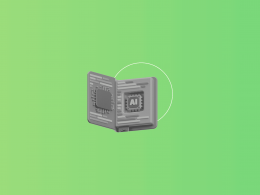Welcome to the world of procurement – the heartbeat of a company’s operations. Procurement it’s not just about making purchases, it’s about making smart choices, always finding the best deals, and ensuring that every dollar spent brings in maximum value and quality. That’s what effective procurement is all about.
As we delve deeper, you’ll learn what procurement involves, how it fits into your business management strategy, and how to best navigate the procurement process.
Transform your procurement record-keeping and COGS management with Synder! Explore how our cutting-edge solutions can ensure accuracy and efficiency in tracking your procurement activities and the cost of goods sold. Elevate your business with precise and effortless record management today!
What is procurement in business?
Procurement is the process that businesses use to get the goods and services they need. It’s a crucial part of any company, big or small because it involves everything from deciding what to buy to actually getting it (and all the steps in between).
Procurement affects how much the company spends and the quality of products and services it gets. It’s not just about finding the cheapest option; it’s about getting the best value for money and making sure the company has everything it needs to operate.
Procurement, purchasing, and buying in business: same or different?
In business terms, procurement, purchasing, and buying, while related, refer to different aspects of the process of acquiring goods and services.
Procurement
Procurement is the broadest term among the three. It’s the entire process that a business goes through to get the goods and services it needs. This includes not just buying, but also planning what to buy, deciding on the requirements, choosing suppliers, negotiating contracts, and managing the relationships with those suppliers.
Procurement is a strategic process because it involves making decisions that will affect the company in the long run.
Purchasing
Purchasing is a part of the procurement process. It’s specifically about the transaction – the actual buying of goods and services. Once the procurement team has planned what to buy and chosen suppliers, the purchasing team takes over to place orders, receive the goods or services, and handle the payment. Purchasing is more of a routine, day-to-day activity focused on fulfilling the immediate needs of the business.
Buying
Buying is the simplest and most straightforward of the three terms. In many contexts, buying and purchasing are used interchangeably. However, buying can be seen as even more transactional and immediate – it’s the point where the exchange of goods or services for money happens.
Key takeaway
Procurement is the whole process of getting what a business needs, from planning to managing supplier relationships. Purchasing is a part of this process and focuses on the actual transaction of ordering and paying for goods or services. Buying is the most basic act of acquiring goods or services, often used synonymously with purchasing.
Want to find out more about payments? Read our articles about ACH debits and ACH credits.
What are the types of procurement?
Procurement includes buying materials for products, everyday items like office supplies, hiring special services, and getting important equipment. Each type has its own role in keeping the business going. Let’s review different types of procurement.
Direct procurement
Direct procurement involves buying the materials that go directly into the products a company makes. For example, a car manufacturer needs to buy steel for the car bodies, tires for the wheels, and electronics for the dashboard. A clothing company needs fabrics and dyes. These items are critical because they are a major part of what the company is selling. Without these materials, the company can’t make its products.
Indirect procurement
Indirect procurement is about getting goods and services that help the business operate but don’t become part of the final product. This includes things like office supplies (e.g. pens and paper), equipment for maintaining the office (e.g. cleaning supplies and tools), or services such as janitorial work. Even though these items and services aren’t part of what the company sells, they’re essential for keeping the business running smoothly.
Services procurement
Services procurement deals with hiring outside companies or professionals to provide specific services that the business needs. This could include hiring a marketing agency to handle advertising, IT consultants to manage computer systems, or a customer service center to deal with customer queries. These services are important for parts of the business that require special expertise or resources that the company doesn’t have in-house.
Goods procurement
Goods procurement focuses on acquiring physical items that the company needs to run the business or those that go directly into making the products (i.e. indirect and direct procurement). These could be office furniture, computers for the staff, new machinery for the factory, or parts needed for the final products.
How does procurement fit into the supply chain?
Procurement and supply chain are two important concepts, especially when it comes to managing how goods and services move.
Procurement is an essential part of the supply chain. In this context, it’s about getting the right materials and services to start the production process, which influences everything that happens afterward in the supply chain. Good procurement means a more efficient, cost-effective supply chain.
A supply chain can involve many different businesses and processes. It’s a big network that ensures that the final product reaches the customer. The supply chain includes procurement as well as many other steps such as production, logistics, and distribution.
Here’s how procurement fits in the supply chain:
- Starting the process: Procurement is often the first step in the supply chain. Before anything can be made or sold, a business needs to get the right materials and services. This is where procurement comes in. It’s about finding and buying these necessary elements.
- Interacting with suppliers: In procurement, businesses interact with various suppliers. These supplier companies provide the raw materials, components, or services needed. Effecting procurement management ensures that what a business buys is reliable, and offers good quality and fair prices.
- Influencing production: The materials and services obtained through procurement directly affect how and when products can be made. If procurement is efficient, production is more likely to stay on schedule and be successful.
- Affecting quality and cost: What businesses procure affects the quality of the final product and how much it costs to make it. Good procurement can lead to better products at lower costs.
- Supply chain efficiency: Effective procurement helps the whole supply chain run smoothly. It means there are fewer delays, costs are controlled, and the business can respond better to market demands.
Is procurement the same as sourcing?
Sourcing is a critical component of the procurement process, contributing to making informed, strategic decisions that benefit the business. Let’s break down how they fit together.
Sourcing as the first step
Sourcing is often seen as the initial phase in the broader procurement process. It’s about finding the right suppliers for what the business needs. This means researching different suppliers, understanding what they offer, and evaluating if they match the business’s requirements in terms of quality, price, and reliability.
Sourcing informs procurement decisions
The information gathered during sourcing greatly influences procurement decisions. Once you have a list of potential suppliers and know what they offer, procurement uses this information to make informed decisions about who to buy from, how much to buy, and under what terms.
Supplier relationships
Sourcing is also about building relationships with potential suppliers. These relationships are crucial when it comes to procurement because having a good relationship with suppliers can lead to better prices, higher quality goods or services, and more reliable delivery.
Negotiating terms
Procurement involves negotiating terms with suppliers. The groundwork for these negotiations is often laid during the sourcing process. Understanding the suppliers’ capabilities and needs during sourcing can help the negotiation phase in procurement.
Ensuring quality and compliance
Sourcing is not just about finding suppliers but also ensuring they meet certain standards. This includes quality checks and making sure they comply with legal and ethical standards. Procurement then continues this oversight by including quality and compliance terms in contracts and managing the ongoing supplier relationship.
Strategic alignment
Sourcing plays a role in aligning procurement activities with the business’s overall strategy. For instance, if a business aims to be sustainable, sourcing will focus on finding suppliers who provide eco-friendly products. Procurement then ensures that the purchases from these suppliers align with the company’s sustainability goals.
Continuous evaluation
While procurement manages the ongoing relationship with a supplier, sourcing is involved in continuously evaluating the market for potential new suppliers, alternative products, or better deals. This keeps the business in step with the most beneficial market opportunities available.
The procurement process: How does the procurement work?
As procurement spans many different steps and stages, we will explore each one of them to shed light on the whole procurement process.
Step 1. Identifying the need for goods or services
This is the first step in the procurement process that sets the wheels in motion. Here, a business figures out what it needs. It might be materials to make products, new equipment for the office, or specialized services like IT support. The key is to understand exactly what is required to keep the business running or to meet its production targets.
Step 2. Developing and sending out Requests for Proposal (RFPs) or Requests for Quotation (RFQs)
In this step, the business creates and sends out documents called RFPs or RFQs to potential suppliers. These documents list what the business needs and ask suppliers to provide details on what they can offer and at what price. It’s a way for the business to gather information from different companies to compare and decide.
Step 3. Evaluating suppliers and their proposals
After receiving responses from suppliers, the business reviews them carefully. They look at the prices offered, the quality of goods or services, how reliable the suppliers are, and how well they can stick to the delivery schedule. The business also checks if the supplier companies are stable and if they match the company’s ethical standards. This step helps in choosing the best supplier for the job.
Step 4. Contract negotiation and finalization
Once a supplier is chosen, the business negotiates the details with them. This includes discussing the price, when and how the goods or services will be delivered, and how payment will be made. The aim is to agree on terms that work well for both the business and the supplier. When they agree on everything, they sign a contract to make it official.
Step 5. Order management and fulfillment
Now, the business officially places the order with the supplier. This phase is about making sure the order is filled correctly and on time. The business keeps in touch with the supplier, checks how the order is coming along, and handles any problems that might pop up.
Step 6. Receipt and quality check of goods or services
When the business gets the goods or services, they check them over. They make sure everything is as it should be and according to what was agreed in the contract. If there are any problems (e.g. if something’s missing or not up to standard) they talk to the supplier company about it. This check ensures the business receives exactly what it ordered.
Step 7. Payment processing and closing the procurement cycle
The last step of the procurement process is paying the supplier. Once everything is in order, the business processes the payment as agreed in the contract. After the payment is done, the deal with that supplier for that specific purchase order is complete. However, the business might work with the same supplier again in the future.

How to efficiently manage your procurement process?
Managing your procurement process efficiently means creating a procurement strategy that can handle every step well even if unnecessary complications happen. Here’s how you can do that.
Plan carefully
Start by knowing exactly what your business needs. This means understanding not just what to buy but also how much you need and when you need it. Good planning helps avoid last-minute rushes or buying things you don’t really need.
Choose the right suppliers
Do your research to find reliable suppliers. Look for suppliers who offer a good balance of quality, price, and reliability. It’s not always about going for the cheapest option; you want a business partner who won’t let you down.
Use technology
There are lots of software tools out there that can help make procurement more efficient. These tools can help you track orders, manage supplier information, and even automate some parts of the buying process.
Build good relationships with suppliers
Work on building strong relationships with your suppliers. When suppliers like working with you, they’re often more willing to give you better deals or help out in urgent situations.
Negotiate smartly
Don’t be afraid to negotiate with suppliers to get better prices or terms. But remember, negotiation is about reaching a deal that’s good for both sides.
Keep track of everything
Keep good records of what you buy, from whom, and at what price. This helps you keep track of spending and can also be useful for future negotiations or when you need to reorder.
Train your team
If you have a team, make sure they’re well-trained in your procurement processes. Everyone should understand how to make purchases properly and how to stay within budget.
Regularly review your procurement process
Every once in a while, take a step back and look at how your procurement process is working. Are there things that could be done better? Are there new suppliers or technologies that could make things more efficient?
Finance in procurement: The best practices for record-keeping
Keeping accurate, organized, and up-to-date accounting records is crucial for managing your business’s finances properly but also prepares you for financial audits and tax season.
Use accounting software
Invest in good accounting software as it can help you track all your procurement transactions, including purchases, payments, and receipts. It makes it easier to enter data, generate reports, and keep everything organized.
Record transactions promptly
As soon as you make a purchase or a payment, record it in your accounting system. Delaying this can lead to forgotten or misplaced invoices and can cause inaccuracies in your records.
Categorize expenses
When recording your procurement transactions, categorize them appropriately. For instance, office supplies, raw materials, and services should be recorded under different expense categories. This helps in understanding where your money is going and assists in budgeting.
Compliance with tax laws
Make sure your procurement bookkeeping aligns with tax laws. This includes properly documenting taxable and non-taxable purchases and keeping records that support your tax filings.
Keep digital copies of invoices and receipts
Scan or take digital photos of all procurement-related documents like invoices, receipts, and contracts. Store these digitally in an organized manner, preferably linked to their respective transactions in your accounting software.
Regular reconciliation
Regularly compare your procurement records with bank statements and supplier statements to ensure they match. This process, known as reconciliation, helps catch any errors or discrepancies in your records.
Maintain vendor files
For each supplier, keep a file (either physical or digital) with all relevant documentation, including contracts, purchase orders, invoices, and correspondence. This makes it easy to reference past transactions and agreements.
Track purchase orders
If you issue purchase orders (POs), keep a record of them and match them with the corresponding invoices when they arrive. This ensures that what you ordered matches what you received and what you’re paying for.
Monitor accounts payable
Keep a close eye on your accounts payable (money you owe supplier companies). Set up automatic reminders for when payments are due to avoid late fees and maintain good relationships with your suppliers.
Review and analyze
Regularly review your procurement expenses. Look for trends, such as increasing costs in certain areas or opportunities for bulk purchasing discounts. This analysis can help you make more cost-effective procurement decisions in the future.
Procurement policies and procedures
Since procurement spans many stages is important to have clear policies and procedures that streamline the processes and set specific standards.
Setting clear rules for purchasing
Procurement policies lay out the rules for how a business buys goods and services. This includes what can be bought, who has the authority to make purchases, and how much they can spend.
Approval processes
These policies often include details on the approval process. This means specifying who needs to approve purchases, especially big or expensive ones. It ensures that important spending decisions get reviewed by the right people in the company.
Aligning with business strategy
Good procurement policies help ensure that purchasing decisions support the overall goals and strategy of the business. For instance, if a business is focusing on being environmentally friendly, its procurement policy might prioritize buying from suppliers who use sustainable practices.
Ethical guidelines
Procurement policies often include ethical guidelines. While many of them might seem obvious having them in writing helps the entire procurement process. This means setting standards for things like not accepting bribes, ensuring fair treatment of suppliers, and avoiding conflicts of interest. It’s about making sure that all purchasing decisions are made fairly and ethically.
Budget management
These policies help in managing the company’s budget. They set guidelines on how much can be spent and that the purchases are necessary and cost-effective. This helps the business stay within its budget and avoid unnecessary expenses.
Legal compliance
Procurement policies also ensure that the company complies with laws and regulations related to purchasing. This can include things like contract laws, fair competition laws, and regulations specific to the industry in which the business operates.
Risk management
Having set policies helps manage risks. It reduces the chances of fraud, overspending, and other issues that can arise from unregulated procurement practices.
Supplier management
These policies can also cover how to select and manage suppliers. This includes how to evaluate a supplier’s reliability, quality of products, and pricing.
Training and awareness
Lastly, having procurement policies means the business can provide better training to its employees. Everyone who is involved in purchasing should understand the rules and procedures, and why they’re important.
Procurement software: How can technology help with procurement?
Technology can be a big help in making the procurement process easier, faster, and more efficient. Let’s look at some specific ways technology can assist in procurement.
Automated ordering systems
These systems can automatically place orders when your stock of certain items gets low. This means you don’t have to constantly check inventory levels yourself, and it helps prevent situations where you run out of important products.
Electronic Data Interchange (EDI)
EDI lets you exchange documents like purchase orders and invoices electronically with suppliers. This speeds up the whole process, reduces paper use, and cuts down on errors that can happen when entering data manually.
Supplier management software
This kind of software helps you keep track of all your suppliers in one place. You can easily access pricing, contract terms, and past performance information. This makes it easier to compare suppliers and make informed choices.
E-procurement platforms
These online platforms let you handle many procurement tasks digitally, like submitting purchase requests, approving purchases, and processing payments. They often come with catalogs of items from different suppliers which makes it quicker to find what you need.
Cloud-based inventory management
Cloud-based systems allow you to track your inventory levels in real-time from anywhere. You can see exactly what you have, what you need, and when you need to reorder, all without being tied to a specific location.
Contract management software
This software helps manage contracts with suppliers. You can store all your contracts in one place, track when they need to be renewed, and get alerts for important dates or milestones.
Analytics and reporting tools
These tools help you analyze your procurement data to identify trends, efficiencies, and areas for improvement. They can provide insights into how to streamline your procurement process and make better purchasing decisions.
Challenges in procurement
Procurement, like any other area of business, faces several challenges. It’s best to know these potential issues in advance so that you can build preventive strategies.
Dealing with fluctuating market conditions
Market conditions can change rapidly, affecting prices and availability of goods and services. For example, if the price of a key material suddenly goes up, it can cost the business more to make its products. Or, if there’s a sudden increase in demand for a product, suppliers might not be able to keep up. Procurement has to stay on top of these changes and adapt quickly to make sure the business isn’t negatively affected.
Ensuring ethical and sustainable procurement practices
It’s important for businesses to source goods and services in a way that’s ethical and sustainable. This means not buying from suppliers who use unfair labor practices or harm the environment. The challenge is to find companies or organizations that meet these standards while still offering good quality and prices.
Managing supply chain risks
A big challenge in procurement is handling risks in the supply chain. Problems can happen, such as when a supplier suddenly is not able to deliver, or weather disrupts shipping routes. The business needs to have contingency plans for such situations.
Keeping up with technology and innovation
Technology is always changing, and keeping up with these changes can be a challenge in procurement. New software and tools can help make procurement more efficient, but learning and integrating these technologies can be tough. Also, there’s a need to be aware of new materials and methods that could benefit the business.
Handling international procurement issues
If a business buys goods or services from other countries, this can add extra challenges. These include dealing with different laws and regulations, handling currency exchange rates, and understanding cultural differences in doing business. International procurement can offer great opportunities, but it also requires careful management to avoid problems.
Conclusion
Procurement is a complex process involving sourcing, negotiating, and managing relationships, all aimed at getting the right goods and services at the right price. From sourcing the right materials to keeping accurate records and staying ahead with technology, every aspect of procurement plays a significant role in driving a business forward.
Remember, effective procurement is more than just buying; it’s a strategic approach to ensuring your business has everything it needs to succeed in the competitive market.

.png)




